Israeli coral rescue plan needs chisel and deep blue sea
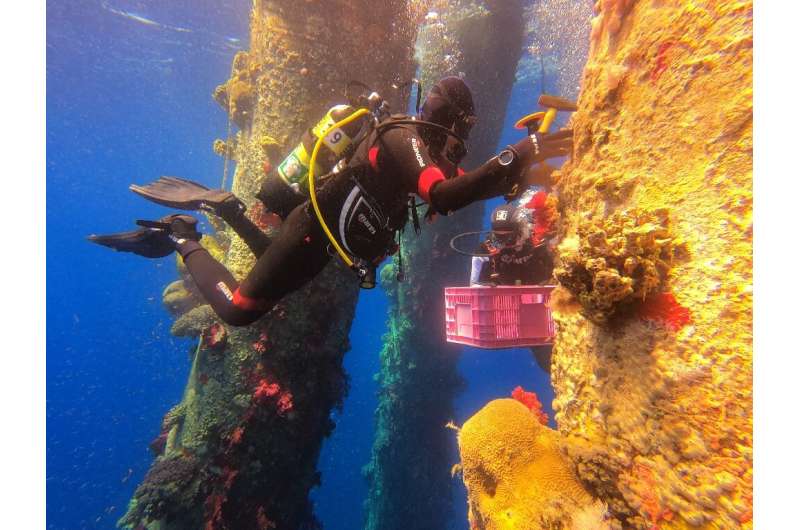
A dozen feet deep in the azure waters of the Red Sea, Israeli marine ecologist Assaf Zvuloni firmly grasped a bright red coral fastened to a metal jetty piling.
The coral and others close by would most likely perish in planned maintenance works at the site, degrading all the benefits they bring to underwater life.
So to save them, Zvuloni and his colleague Assaf Habary have donned scuba gear and armed themselves with chisels and hammers before diving underwater to remove the coral and take them to a new location.
"We need to safeguard them," Habary, of the Israel Nature and Parks Authority, said after the dive.
It is important to "maintain the ecosystem's health," he said.
On a recent day, Habary, Gulf of Eilat regional manager for the authority, placed a chisel at the bottom of the red coral and carefully began hitting, causing a loud clacking to reverberate through the silent sea.
Coral use the 16-metre (52-foot) pilings supporting an oil jetty off the southern Israeli resort city Eilat as artificial reefs, creating colourful and varied vertical mosaics that support much of the marine life around.
The area around the jetty is closed to boats and divers, enabling the coral to thrive undisturbed.
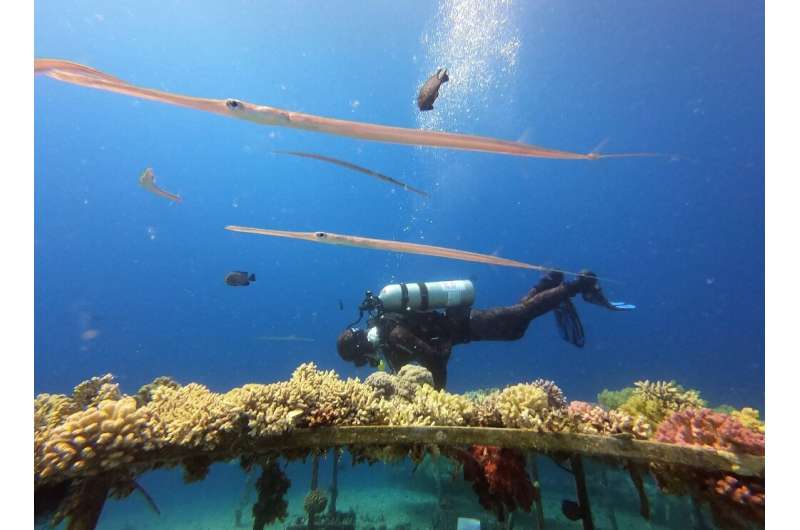
But maintenance work planned on the jetty would be fatal to the animals—a protected species under Israeli law, with the Nature and Parks Authority tasked with their relocation.
-'Important animals'-
After a short while, the red coral came off the piling, and Zvuloni carefully placed it in a small pink plastic crate he held in his free hand alongside a number of others that had been recently removed.
The two divers swam up to the surface of the water where Avi, the skipper of the small motorboat that brought them to the site, leaned over to take the crate, placing it in a large blue container on the stern of the swaying vessel.
The boat sped off to the nearby Underwater Observatory Marine Park, where the coral will be divided between the reef there and a large aquarium.
Zvuloni estimates that they have relocated 1,000 coral over the past year, not only from the jetty and other structures but also from pieces of waste that had been sitting on the seabed and were being cleared away.
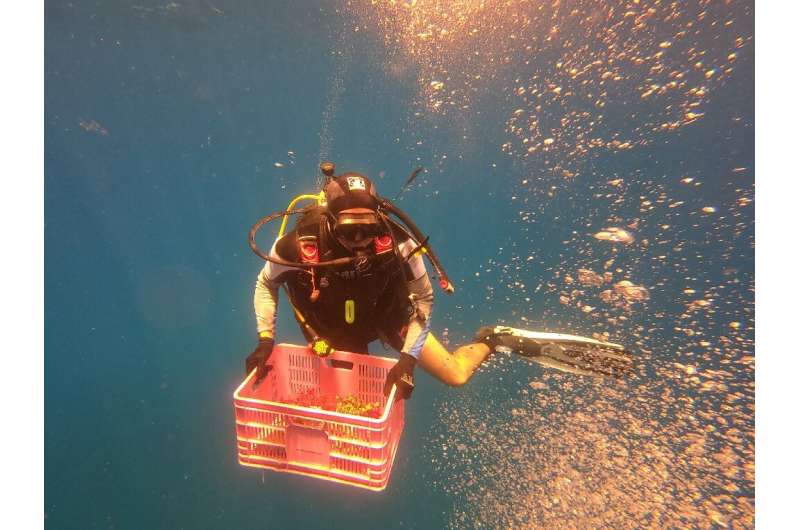
Not all coral, however, allow themselves to be evacuated.
Zvuloni and Habary spent many long and precious underwater minutes trying to remove a yellow, dome-shaped stony coral before throwing in the towel.
"We'll have to use a crowbar," Habary said grimly.
Each coral constitutes a vital habitat to animals and plants.
"Corals in general are very important animals in being species that engineer the environment," Zvuloni said. "It's much more than just the coral itself."
While relocation saves the coral from a certain death, not all survive the move, which could be to the observatory and local educational facilities, or even the Jerusalem zoo's aquarium.
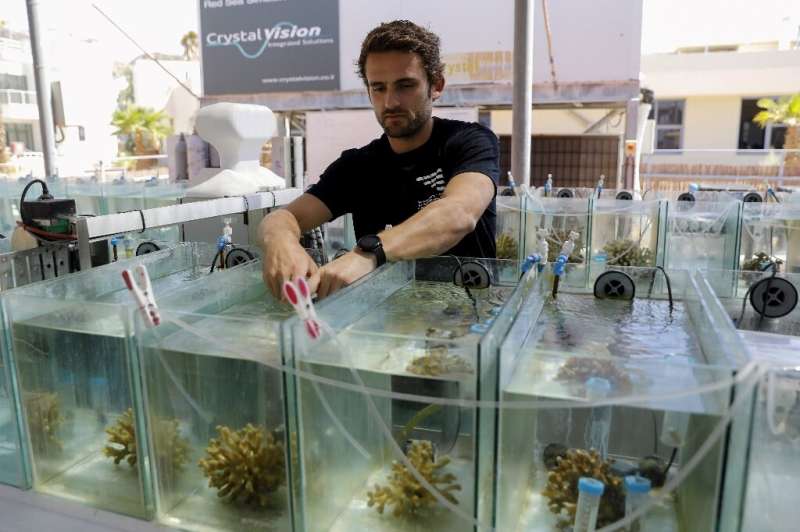
'Very sensitive one'
Coral populations around the world are undergoing bleaching and dying due to global warming, but the population in the northern Red Sea has remained stable due to its unique heat resistance.
"Being stable these days is a privilege," Zvuloni said.
In another area of the northern Red Sea, experiments have been ongoing to measure the health of the region's corals.
While relatively heat resistant, factors such as pollution from heavy metals could harm the corals' durability, said Guilhem Banc-Prandi, a 25-year-old French marine biologist working on a doctorate at the Interuniversity Institute for Marine Sciences in Eilat.
The proximity of the Gulf of Eilat's reefs to the shore increases the threats they face, with "toxins and pollution" from human activity and industry entering the bay on a daily basis, according to Banc-Prandi.
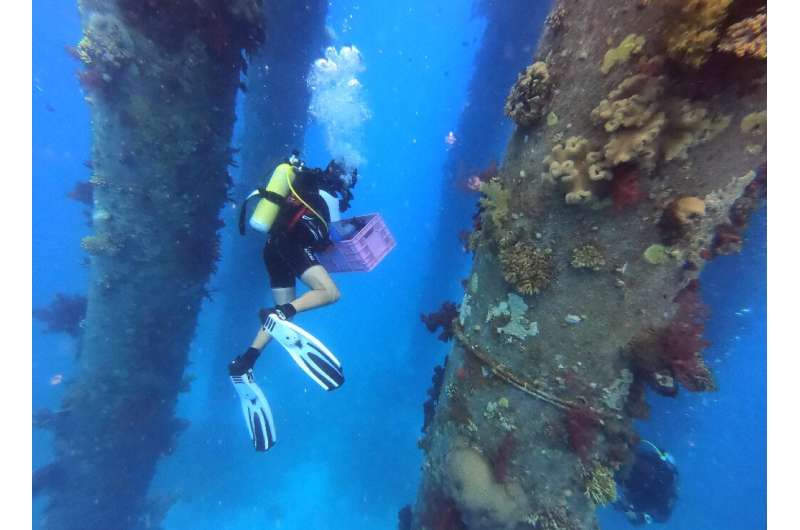
To counter those threats in Eilat and elsewhere, Banc-Prandi has founded WeSea, an NGO dedicated to raising awareness of the marine environment and educating the public.
"We strongly believe that outreach and education can truly change the fate of the marine eco-system," he said.
To Zvuloni, saving the coral is not only of ecological significance but an "ethical duty."
With their stony or vegetative appearances, most people encountering coral don't even realise that they are alive.
"It's an animal, a very sensitive one," Habary said, "that needs to be preserved."
© 2019 AFP





















